1. Avoid Confusion and Misalignment: A customized recognition program aligns with the organization’s goals and values, preventing confusion and ensuring employees are motivated to achieve key business objectives.
2. Build Trust and Engagement: Tailored programs meet employees’ specific expectations, fostering trust and higher engagement while avoiding negative perceptions that can arise from generic, one-size-fits-all programs.
3. Respect Demographics and Cultural Diversity: Recognizing employees’ diverse backgrounds, work profiles, and preferences ensures that recognition methods are meaningful, culturally sensitive, and effective across different groups.
4. Align with Organizational Goals and Leadership Style: Customized programs should reflect the organization’s unique goals, strategy, and philosophy, ensuring leadership support and effective implementation.
Organizations should tailor their employee rewards and recognition programs based on their business and workforce needs for greater effectiveness. There are several reasons for customizing an employee recognition program – a one-size-fits-all approach would never work.
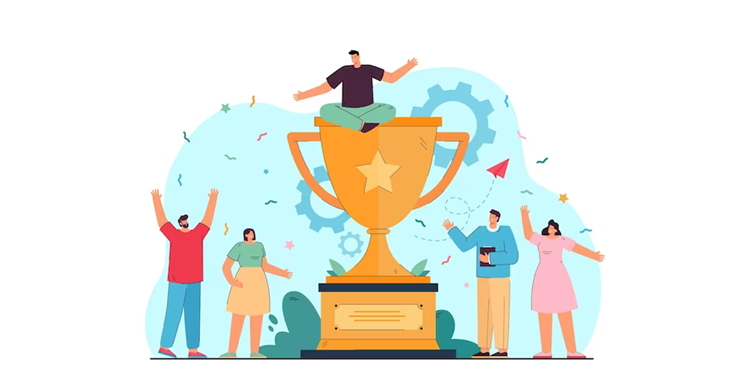
Every organization’s business and workforce are unique in many ways.
What motivates employees in one organization might not work in another organization.
The workforce’s profile and expectations differ from one organization to the other.
To top it off, the program goals and expectations may differ significantly between organizations.
A mismatched program might be worse than not having a program at all!
It is why:
1. Creates Confusion
2. Loss of Trust
3. Dilution of Culture
4. Low Employee Engagement
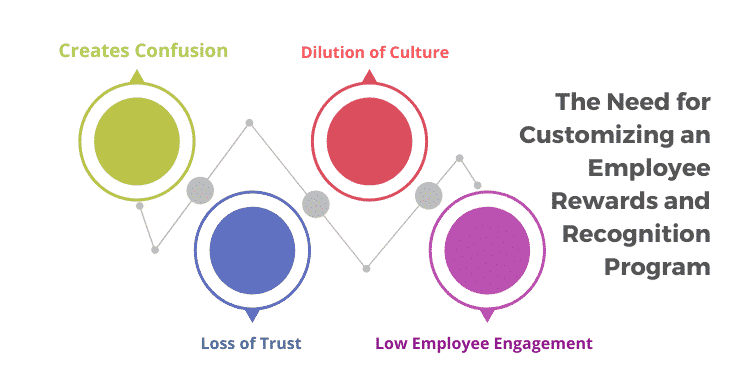
A program that does not recognize the appropriate achievements can create significant ambiguity and confusion among the employees.
For example, if an organization has productivity or process improvement as a key business goal but does not recognize such efforts, employees are unlikely to be motivated to work towards those goals.
Employees might perceive a mismatched program as an eyewash rather than a genuine effort on the part of the organization.
It may result in a loss of trust and commitment to the organization.
For example, in a dynamic environment like customer service, if there are only annual awards and no spot awards or other awards with a shorter horizon, employees might perceive that the program is not genuine and unfair.
If the program does not promote the organization’s core values, it might dilute its culture.
For example, if an organization wants to promote a culture of collaboration but only recognizes individual achievements, it is likely to send out the wrong message to the employees.
Employees might overlook a program that does not meet their needs or expectations and may eventually stop participating.
Hence, there might be resistance and negativity if the organization attempts to push them in that direction.
For example, if the workforce consists largely of millennials and the rewards are just trophies and mementos, it is likely to have no impact or even a negative impact on employee motivation.
A generalized approach to designing an employee rewards and recognition program is unlikely to work.
Hence, organizations find it challenging to understand the various factors for customizing a program to their specific needs.
Here’s a look at the top ten reasons for customizing an employee recognition program for an organization:
1. Type of Industry
2. Organization Size and Structure
3. Geographical Distribution of Workforce
4. Demographic Profile of Workforce
5. Cultural Background of the Workforce
6. Nature of Work and Compensation Levels of the Workforce
7. Organizational Values and Culture
8. Organization Goals and Business Strategy
9. Leadership Philosophy and Style
10. History of Similar Programs/ Initiatives
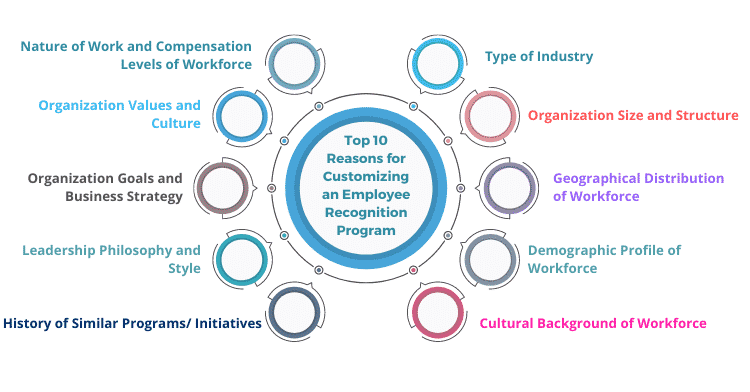
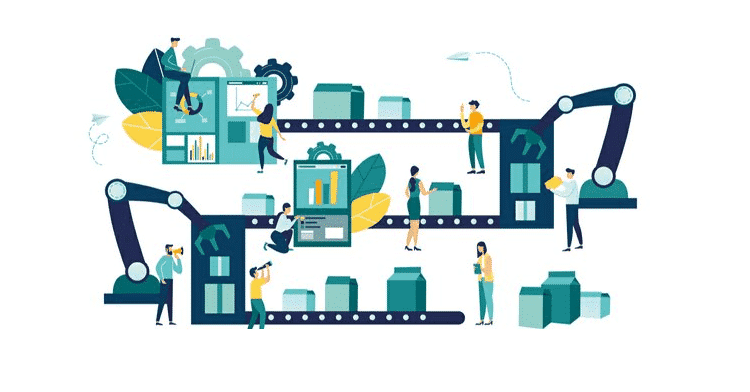
The industry type – manufacturing, technology, or services– would be vital in designing the employee recognition program.
Hence, employee rewards and recognition programs should closely align to the key performance areas of the employees, which depend largely on the industry and the employee roles. .
For example, in the manufacturing industry, employee achievements related to productivity, quality, and safety should be acknowledged.
Whereas, in the consumer services industry, organizations need to recognize acts of customer centricity.
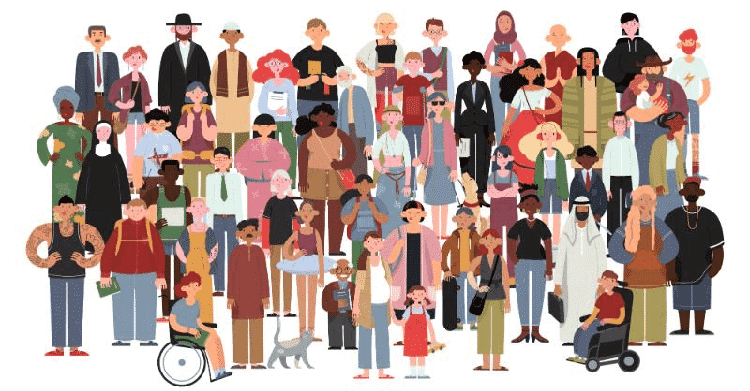
Also, the organization needs to consider the size of its workforce and the complexity of its structure when designing the reward and recognition program.
For example, a small organization can have a single rewards and recognition program and a common decision-making process across the entire organization.
Whereas, a large organization with multiple units should have a multi-level program structure where decision-making is done at the unit level. There could also be unit-specific programs alongside ‘corporate programs’ across all units.

Organizations need to tailor employee rewards and recognition programs based on the number and geographical spread of the work locations.
They also need to consider that employees work remotely while designing any program.
For example, an organization that has its workforce distributed across multiple countries in the world should consider the decision-making process for most awards to happen at the country level.
The organization could also consider running country-specific award programs or customize at least a portion of them based on the needs of each country. There could also be a few global awards with clear nomination and evaluation criteria.

Organizations should consider the demographic profile of the workforce while designing the recognition program.
They should look at the age group, gender mix, and educational background of the employees.
These variables tend to play an essential role in understanding the expectations of the employees from the program.
For example, if a workforce has a significant proportion of Gen Z and millennials; then they are likely to expect elements of digital experience, gamification, instant gratification, and social visibility in the program.
Whereas a more mature workforce is likely to expect greater personal touch, more meaningful and personalized rewards, award ceremonies, etc.
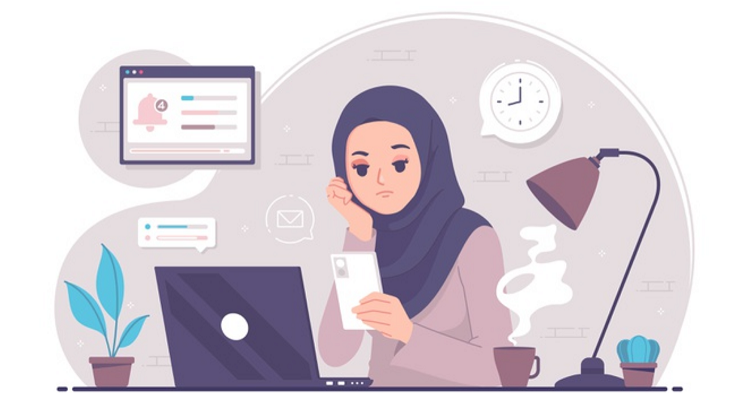
Considering the ethnic and cultural backgrounds of employees while designing the rewards program for employees is of great significance.
The organization should not hurt the sensitivities of a particular ethnic or cultural group. It should reward and recognize them in a way that is acceptable to them.
Hence, organizations need to look at many aspects of the program design, keeping in mind the expectations and acceptability of different cultural groups within the workforce.
These should include right from the name of the program, name of the awards, use of monetary and cash awards, award ceremonies, etc. Several cultures look down upon cash awards and vice-versa.
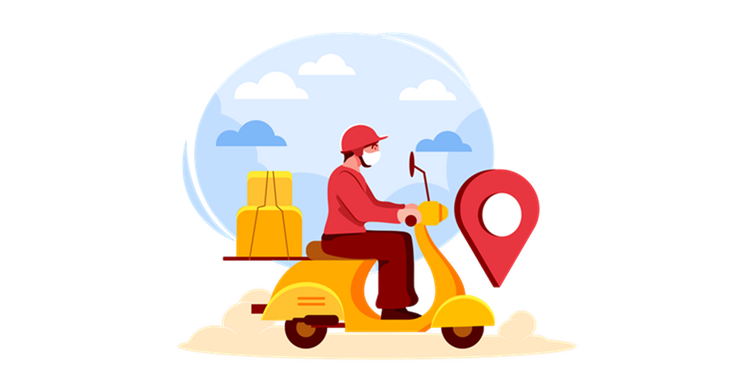
Another critical factor in the program’s design is the employees’ work profiles and compensation levels.
Hence, an employee’s work profile or function largely determines the employee’s key performance indicators, which should form the basis of the rewards and recognition program.
Different business functions might have different performance indicators even within the same industry. Similarly, compensation levels would determine the importance employees are likely to attach to the monetary value of the awards.
For example, employees in customer-facing jobs like customer service should be rewarded and recognized for going the extra mile to solve customers’ problems.
Whereas, employees who work in software development should be recognized for solving technical problems quickly, and for creating a positive impact on the project delivery.
Similarly, employees with lower compensation levels might be more motivated by monetary awards, as compared to pure non-monetary awards.

A successful employee reward and recognition program should align with the organization’s values and culture.
The program should recognize behaviors the organization wants to promote that align with its core values.
For example, if the organization’s core values include collaboration, then the recognition program should include team awards or awards that have teamwork as the key criteria.
Similarly, if innovation is one of the core values, then the organization should reward and recognize new ideas, process improvement, and other such initiatives.
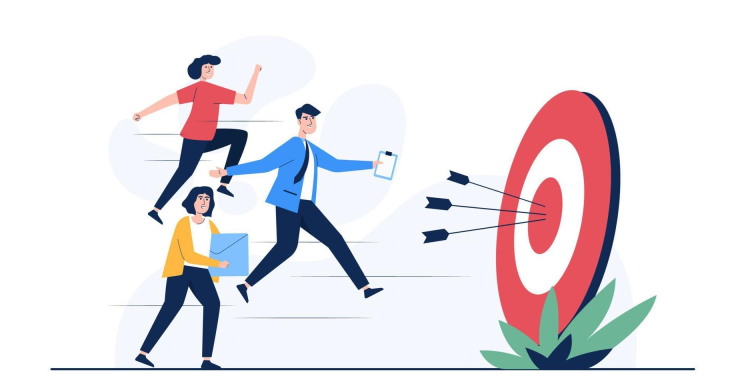
The organization should align its rewards and recognition policy with its goals and priorities.
Organizations in the same industry might have different market leadership positions, growth strategies, and business goals.
For example, an organization that wants to grow by introducing new and innovative products should encourage new product ideas from employees by rewarding and recognizing them for those.
Whereas, an organization that is looking to grow by entering new international markets should reward and recognize employees who can work in a start-up mode, handle ambiguity, and collaborate with the rest of the organization.
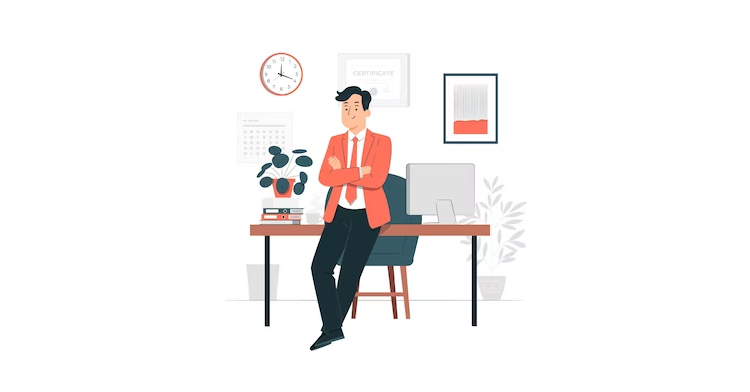
Also, business leaders play an essential role in ensuring the success of employee rewards and recognition programs.
Their leadership style, beliefs, and expectations are essential to the program design.
For example, if the leaders strongly believe that personal touch in recognition and personalized rewards are important, then those aspects should be taken into consideration in the design of the program.
Otherwise, the program is likely to see less leadership involvement or the implementation itself might not get signed off at all.

Organizations must consider their experience with similar HR initiatives from the past.
They should incorporate the impact, feedback, challenges, and other learnings from these initiatives into the design of a new rewards and recognition program.
For example, if the organization had launched an employee engagement program in the past, that didn’t go down well with the employees; then they should try to analyze the key reasons for its failure and carefully consider them in the design of a new program for employee rewards and recognition.
There are several critical reasons for customizing an employee recognition program to meet the organization’s and its workforce’s needs.
Therefore, a customized employee rewards and recognition program is likely to deliver a much higher impact, due to its higher relevance to the employees and the business.
Also read A Step-by-Step Guide on How to Set up an Employee Recognition Program.

Lead author: Sagar Chaudhuri, the Co-Founder and CEO of HiFives. He is an HR Tech Evangelist with over 25 years of corporate and entrepreneurship experience. In the past, Sagar has worked in leadership roles with companies such as Genpact, Infosys, and ICICI Bank. He has an engineering degree from IIT Kharagpur and an MBA from IIM Lucknow. Connect on LinkedIn
To stay updated on the latest HiFives blogs, follow us on Twitter (@MyHiFives)